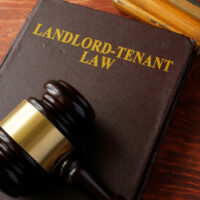Understanding CAM Charges Is Essential for Florida Commercial Landlords

As commercial landlord and tenant attorneys who help ensure that landlords have enforceable commercial leases and experienced counsel to help with any disputes, one of the issues that we frequently assist landlords with here in Florida are common area maintenance, or “CAM” charges. These charges have a significant impact on the property’s net operating income and how much tenants pay. However, disputes can arise with tenants when it comes to CAM charges because unique situations may require costs to be calculated in a way that is different than what is spelled out in the current lease terms. As a result, it is important for commercial landlords to have a thorough understanding of what CAM charges are/include and how to properly account for them in the lease, with the assistance of an experienced attorney.
Below, we discuss what CAM charges are, what’s included in them, the types of commercial real estate leases that do and do not include them, and how they are calculated:
What They Are/Include
While CAM charges are very generally maintenance costs related to managing and maintaining commercial property, there really is no one definition as to what exactly is included in them because they vary based on the market and the property. They are designed to provide property owners with some protection from increasing costs so that the property’s return on investment isn’t significantly impacted. These charges typically include the cost of cleaning, maintaining, and repairing common areas of leased property, although the exact charges depend upon the exact lease that the landlord and tenant agree on; they can be limited to a few items, or they can be broader, covering expenses related to:
- Bathrooms
- Elevators
- Hallways
- Lawn care & landscaping
- Parking lots
- Sidewalks
- Snow removal
- Utilities
- Needs that are unique to the property, such as security, building repairs, property management fees, administrative costs, permit expenses, property taxes, property insurance, and anything else landlord may want to include.
While these costs can sometimes be scary to the tenant, they can also be beneficial in that landlords will sometimes put off maintenance costs if they have to bear the cost themselves.
Where They Appear In Commercial Lease Terms
Not all properties include these charges. They tend to be included in industrial, retail, and warehouse spaces; while office spaces tend to include them in the rent. Specifically, the following types of commercial real estate leases tend to involve some type of CAM charges:
- Triple net leases: The tenant tends to pay CAM charges and takes on all of the responsibilities in terms of paying their share of property taxes, insurance, and common area maintenance. The only responsibility landlord has is covering the capital expenditures, which means repairs to the property; although expenses can vary depending on what landlord and tenant have agreed on during lease negotiations. These types of leases tend to apply to retail properties, such as shopping centers and restaurants
- Net leases: The landlord pays for the common area maintenance while the tenant pays for property insurance and taxes. This type of lease is less common but it is attractive to some tenants because it minimizes risk. It is also sometimes seen where multiple properties share common area expenses, however, the base rent is higher
- Gross leases: Very common in office buildings; where the landlord covers common area maintenance, property taxes, and insurance, and tenant pays flat rent rate without fluctuation based on insurance, maintenance costs or property taxes. The landlord will even sometimes cover utilities.
How They Are Calculated
It is important for property owners to work with attorneys so as to ensure that the leases are structured so as to maximize the return on investment. This typically involves passing CAM charges onto the tenant. However, how CAM charges are calculated also matters. The most common way they are calculated is based on square footage of the property, where each tenant pays their share of the property’s expenses based on the space occupied by dividing the total cost of maintenance by the square footage of the property to get cost per square foot. However other options are:
- Load factor: whatever percentage of the building is used as a common area is added to the square footage of the space rented, which then gives you rentable square footage to base rent on
- Fixed: property owners set a flat fee for common area maintenance and work in small annual increases to cover inflation. You see some shopping malls doing this
- Capped charges: some tenants may attempt to negotiate a cap on how much they will be required to pay towards common area maintenance
Contact Our Florida Landlord & Tenant Law Attorneys
Commercial landlord and tenant law can be extremely complicated, especially when disputes arise. As a result, building in every precaution to your lease with your tenant is the best way to protect yourself as a commercial landlord.
We can help you ensure that you have the best enforceable commercial lease. Contact our Tampa commercial landlord and tenant lawyers at HD Law Partners to learn more about our services today.
Resource:
fool.com/millionacres/real-estate-investing/commercial-real-estate/understanding-cam-charges-commercial-lease/
https://www.hdlawpartners.com/when-commercial-tenants-fail-to-pay-rent/





